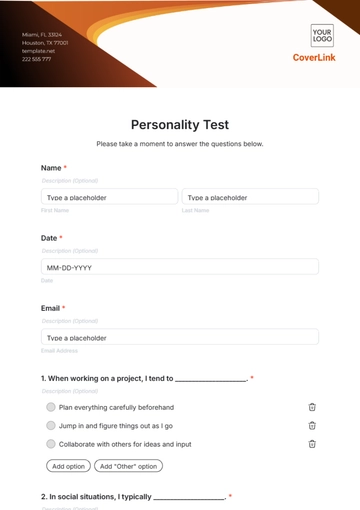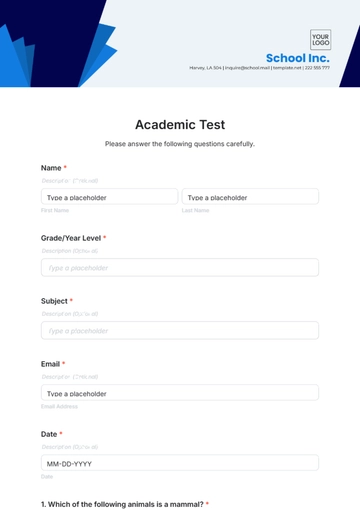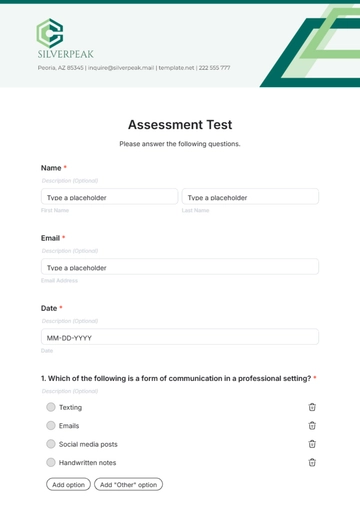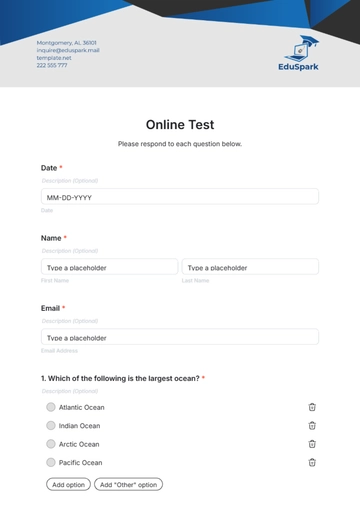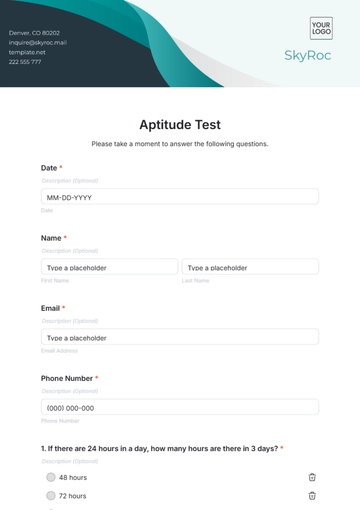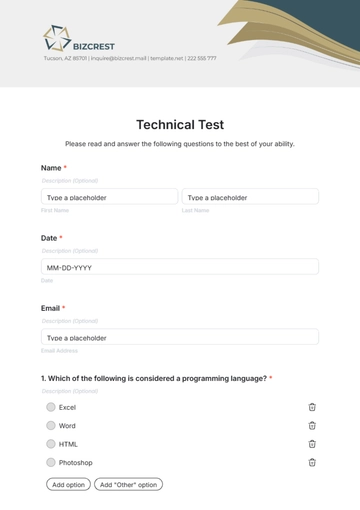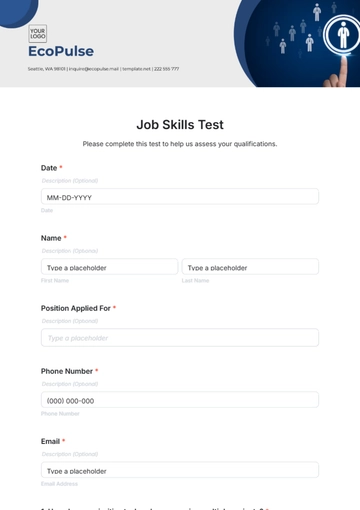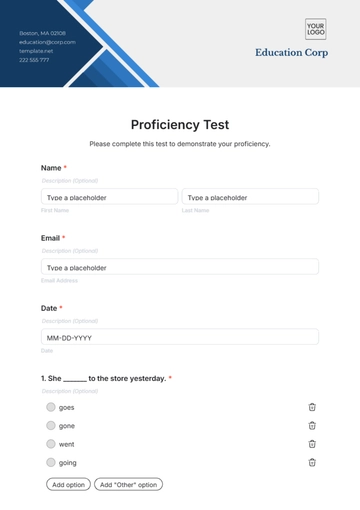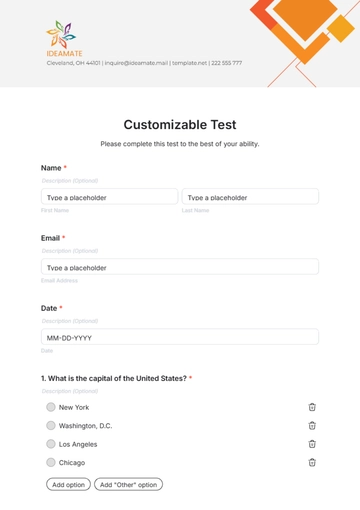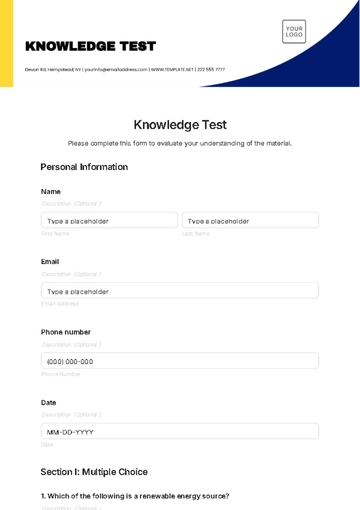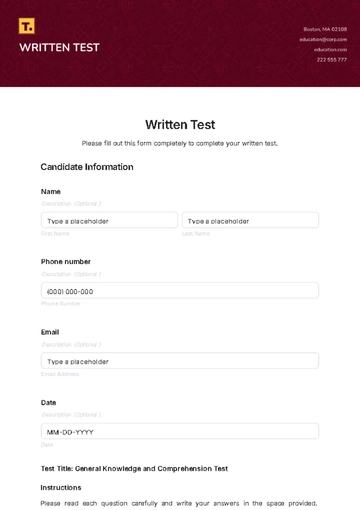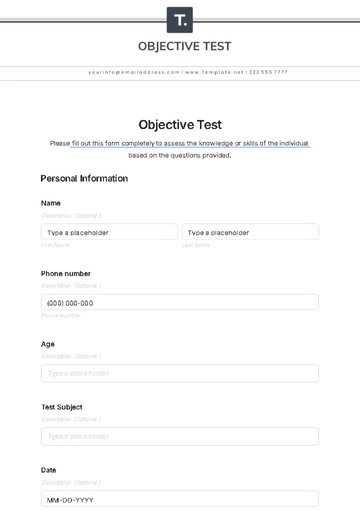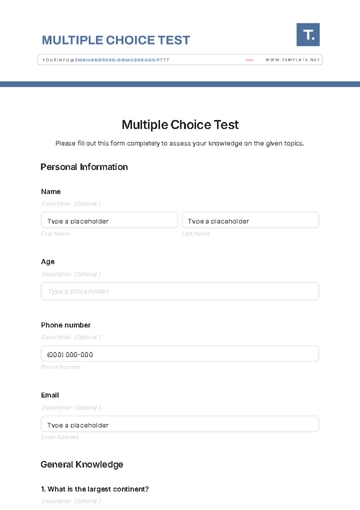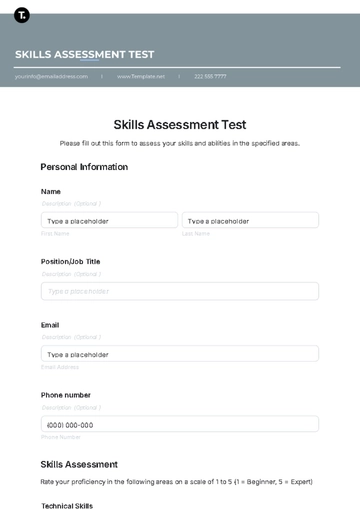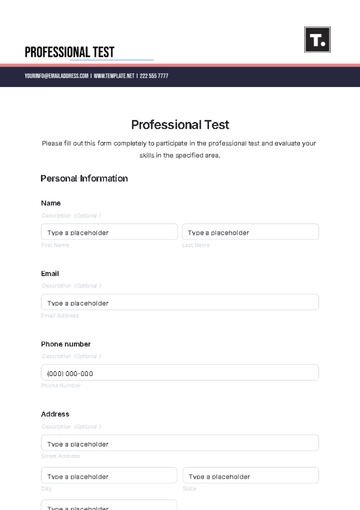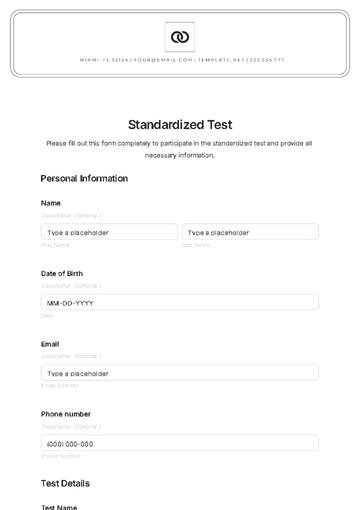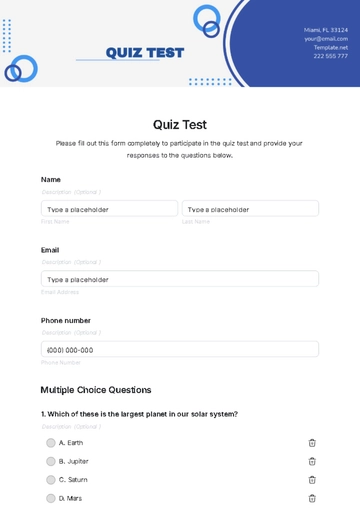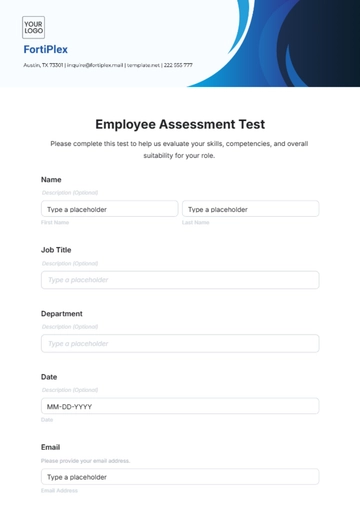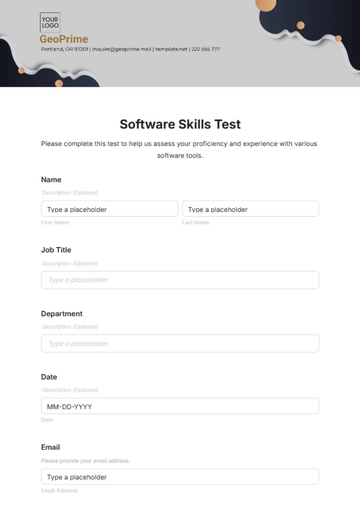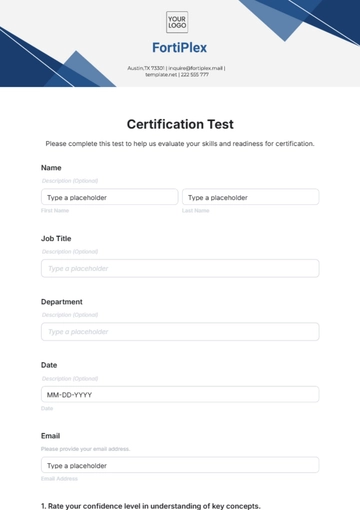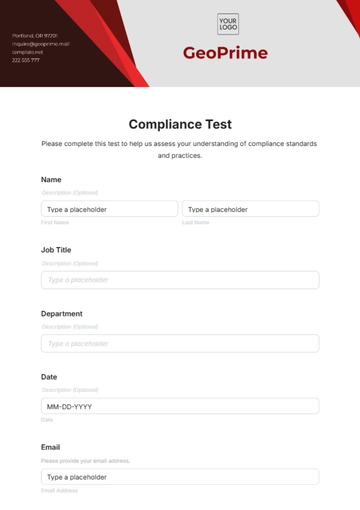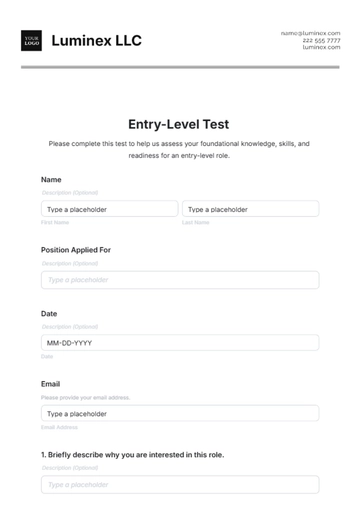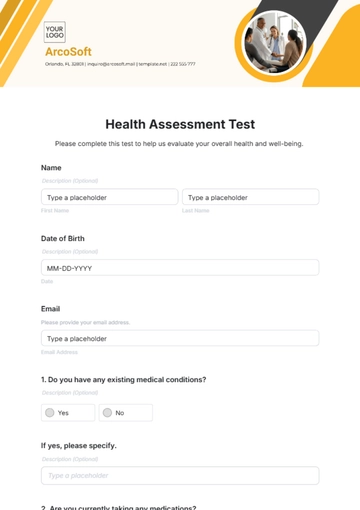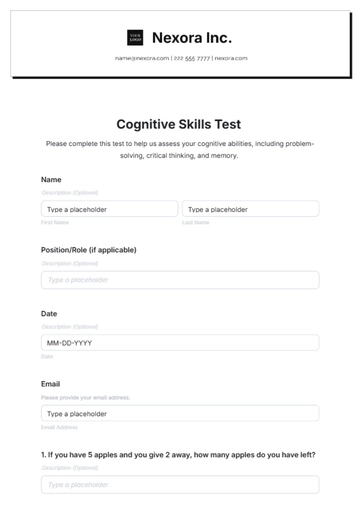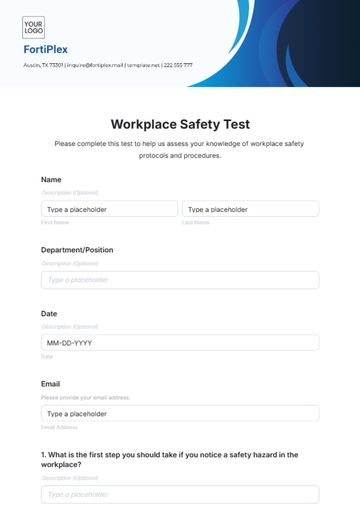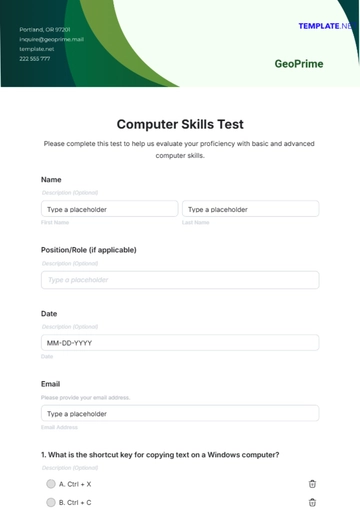Free Leadership Potential Test Guide HR

Introduction
Overview
The Leadership Potential Test (LPT) is a scientifically designed evaluation tool intended to assess the leadership qualities and potential of employees within an organization. Developed to ensure a comprehensive understanding of the skills and characteristics that underpin effective leadership, LPT aims to pinpoint individuals who are most suitable for advancement into leadership roles.
Scope
This guide serves as an all-encompassing manual for HR professionals, outlining the steps required to administer the test effectively. It includes instructions on test components, scheduling, environmental setup, scoring, and interpretation of results.
Objectives
Identification and classification of employees with high leadership potential
Provision of data-driven insights for the development of individual and team-based skill enhancement programs
Assurance of test data confidentiality and integrity
Importance
The need for strong leadership in any organization can hardly be overemphasized. Leadership is the pivot around which the effectiveness and efficiency of teams and, consequently, the entire organization revolve. Hence, identifying leadership potential is crucial for the long-term viability and competitiveness of the organization.
Purpose
Identifying Talent
The core objective of administering this test is to discover employees with high leadership potential. These individuals are earmarked for future leadership roles within the organization.
Staff Development
The LPT also serves as an invaluable tool in the development of existing staff by highlighting their areas of strength and weaknesses. This data can then be used to formulate personalized development programs.
Test Administration
Scheduling
Test Window
The test will be administered during a predetermined test window to ensure operational efficiency and convenience for all participants. For example, the test window for the year 2051 will be from January 10 to January 30.
Calendar Invites
Digital calendar invitations should be sent at least three weeks in advance to prospective test takers. This advance notice allows for any necessary adjustments in the employees' work schedules.
Environment
Physical Space
The test must be conducted in a quiet, distraction-free environment, adhering to standardized testing protocols to guarantee reliable results.
Technical Requirements
Stable internet connection
Individual computers for each test-taker
Secure browser settings to prevent browsing during the test
Test Takers
Eligibility Criteria
A minimum of two years of service within the organization
Successful completion of at least one significant project
Communication
Notify eligible participants via email and internal messaging platforms at least one week before the test date.
Test Components
Component | Description | Duration | Scoring Scale |
Leadership Skills Assessment | Evaluates crucial leadership skills such as decision-making and problem-solving | 30 minutes | 1-5 |
Personality Assessment | Measures key personality traits like openness, conscientiousness, and more. | 20 minutes | A-E |
Situational Judgment Test | Assesses the individual's ability to make sound judgments in various scenarios. | 15 minutes | Pass/Fail |
Leadership Skills Assessment
Subsections
Decision-Making
Problem-Solving
Team Management
Personality Assessment
Subsections
Openness
Conscientiousness
Situational Judgment Test
Subsections
Ethical Dilemmas
Task Prioritization
Scoring
Methodology
Raw scores are first converted to standardized scores.
An overall percentile rank is then calculated for each participant.
Cutoff Scores
A minimum percentile score of 60 is required to pass the test.
Interpretation of Results
Performance Bands
Percentile | Interpretation |
80-100 | High Potential |
60-79 | Moderate Potential |
Below 60 | Low Potential |
Recommendations
High Potential
These employees should be considered for accelerated leadership programs and provided with more strategic roles within the organization.
Moderate Potential
Employees in this bracket could benefit from targeted mentorship programs and should be monitored for future leadership roles.
Low Potential
These employees require further development and should be placed in skill-building or performance improvement plans.
Privacy & Confidentiality
All test results are confidential and will be disclosed only to personnel who have explicit authorization to access them.
Data Integrity
To ensure the utmost confidentiality and data integrity, all test results are securely stored in a highly encrypted database with multi-factor authentication protocols. Access to this database is restricted to a limited number of HR personnel who have been specifically authorized and trained in data privacy protocols.
Disclosure
It is worth noting that test results are confidential and will only be disclosed to individuals who have explicit, written authorization from senior management or the HR department. This is done to ensure that only those who need the information for decision-making or career development activities can access it. The names of those with authorization should be reviewed and updated quarterly to maintain data integrity.
Security Measures
Various security measures such as regular audits, secure login procedures, and automatic logout features are put in place to protect against unauthorized access. Additionally, all authorized personnel are obligated to undergo a data privacy training course annually to ensure they are up-to-date on best practices.
Compliance
The data management system adheres to local, state, and federal data protection laws. Compliance with these regulations is monitored and updated on a semi-annual basis to ensure the highest level of data security and ethical management of personal information.
Frequently Asked Questions
Who is eligible to take the test?
Employees who meet the eligibility criteria, as outlined in the "Test Takers" section of this guide, are qualified to participate in the Leadership Potential Test (LPT). This typically includes employees who have at least two years of experience with the organization and have successfully led at least one project. The aim is to include a diverse group that represents various departments and roles within the organization.
How often is the test administered?
The Leadership Potential Test is generally administered on an annual basis. This frequency enables HR professionals and senior management to track longitudinal changes in leadership skills and potentials among the workforce. The test results are also correlated with other key performance indicators to provide a holistic view of employee development and potential. Special cases may warrant additional test administration, such as significant organizational changes or the introduction of new leadership development programs.
Contact Information
For any further questions, clarifications, or concerns regarding the Leadership Potential Test, please contact the Human Resources department through the available official communication channels. These could include but are not limited to internal email, the company intranet, and a dedicated HR hotline.
- 100% Customizable, free editor
- Access 1 Million+ Templates, photo’s & graphics
- Download or share as a template
- Click and replace photos, graphics, text, backgrounds
- Resize, crop, AI write & more
- Access advanced editor
Unleash the power of efficient hiring with the Leadership Potential Test Guide HR Template from Template.net. Expertly crafted, this customizable template is the perfect tool for HR professionals. It's fully editable in our Ai Editor Tool, allowing for seamless adaptation to your specific needs. Elevate your recruitment process today!
